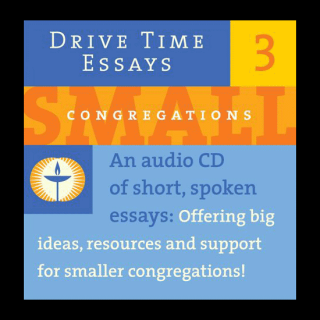Creating a Multigenerational Culture

Drive Time Essays Volume 3: Small Congregations
Learn More
Families with children no longer feel a sense of obligation to attend church. Participation in a religious community is often considered one option among many competing interests. Since these families have a limited amount of time and an unlimited number of choices, what makes them decide that church is a priority in their lives?
Their precious time together as a family needs to be well spent, or it will be spent elsewhere. So if your congregation is serious about welcoming families with children into your community, you must intentionally create a multigenerational culture.
The benefits of doing so can be well worth it, particularly for small congregations. In 2007, the First Unitarian Church (in South Bend, IN) created such a culture and 25 new members joined—a 25% increase. And it also made a difference for their bottom line—their stewardship campaign brought in a record 33% increase in giving, despite the economic crunch that many congregations experienced that year.
So how do you go about creating a multigenerational culture in your congregation?
Since worship is at the heart of what we do in our churches, then finding ways to incorporate children into the worship service with adults is one of best ways to do this.
Krista Taves, minister of Emerson Unitarian Universalist Chapel (in Ellisville, MO) ties her small congregation’s recent growth to their decision to move to a two-hour format with one hour of worship for people of all ages, and one hour with religious education programs for both children and adults. Although the change was adopted so that families with children could worship together on Sunday mornings, the most significant positive effect that the Emerson church has experienced is that the new format of the morning encourages newcomers to be more connected to the larger community. Visitors no longer have to hang around during coffee hour to get to know members of the congregation. Instead, they are able to meet people and make connections during the religious education time that follows the service.
Many congregations are reaping the benefits of having children present for just the first fifteen minutes of each worship service. And if that time of worship is truly geared toward people of all ages, then this can be more effective than having the children present for the entire service, unless an intentional effort is made to accommodate the needs of children as well as adults.
Other congregations plan special worship services specifically created for children and their families. Often these additional services are outside of Sunday morning and may be paired with a potluck meal and special activity. Even small congregations can present a monthly multigenerational night, and those that do find that persons of all ages really do attend, including empty nesters, grandparents whose children live far away, singles, and couples without children.
Beyond providing opportunities for families with children to worship together, there are many other ways to offer a welcoming atmosphere and create a multigenerational culture that affirms people of all ages.
Congregations that hold monthly dinners, game nights, or social gatherings for their members could designate some as “multigenerational.” While these programs will naturally attract those parents who can now attend without having to obtain child care for their children, they will also attract people who like the high-energy atmosphere that is generated when young children are present.
Another successful way to build a community of all ages is to engage in social justice projects that intentionally invite youth to participate and have specific ways to involve children. Through working together to achieve a common good—such as serving meals at a soup kitchen, collecting canned goods for a food pantry, or growing a community garden—children and adults have the chance to get to know one another on a much deeper level.
Even rather simple things—like offering juice as well as coffee during hospitality hour, having child-size hangers in the coat closet, and making high chairs available during potlucks—go a long way toward making the statement that children are not only wanted; they are expected to be present in this place.
Small congregations are in the unique position of truly offering a chance for those persons who regularly participate in community life to build a bond with one another. Often, there are not many children at the congregation. But those children have the opportunity to truly feel an important part of the community, where adults know who they are as individuals. Creating this multigenerational culture in your congregation can not only affirm those children as unique and respected individuals, it will also bring many more to your doors.
About this Essay
Audio Essay Series: Volume 3: Small Congregations, Bonus Track 7 (MP3, 5:27 minutes)
About the Drive Time Essay Series
This Audio Essay series was created by the Unitarian Universalist Association of Congregations, for the purpose of supporting its valued lay leaders. Copying and sharing these essay texts, downloadable audio files, and the companion Lay Leader Drive Time Essays compact disc is welcomed and encouraged.